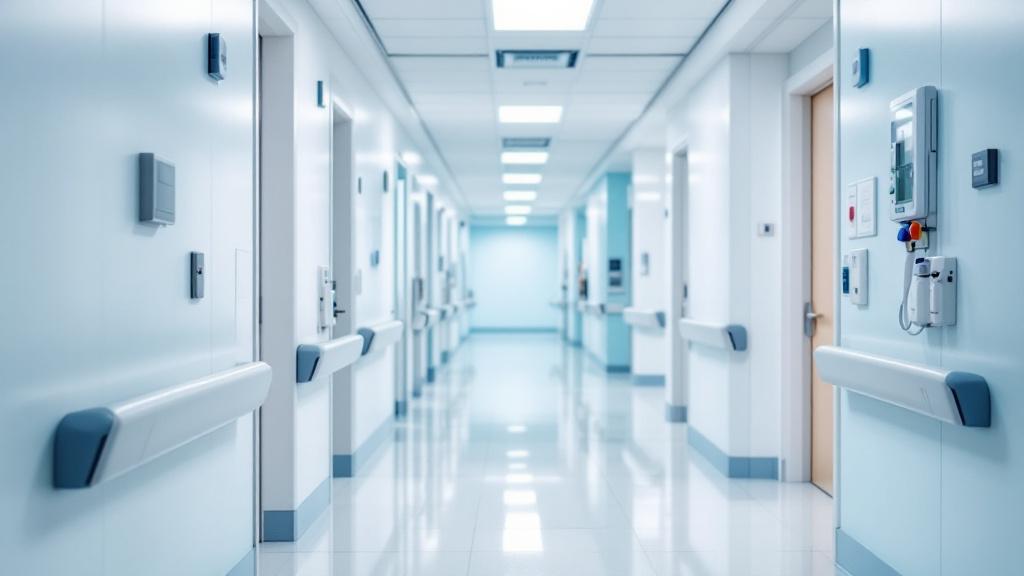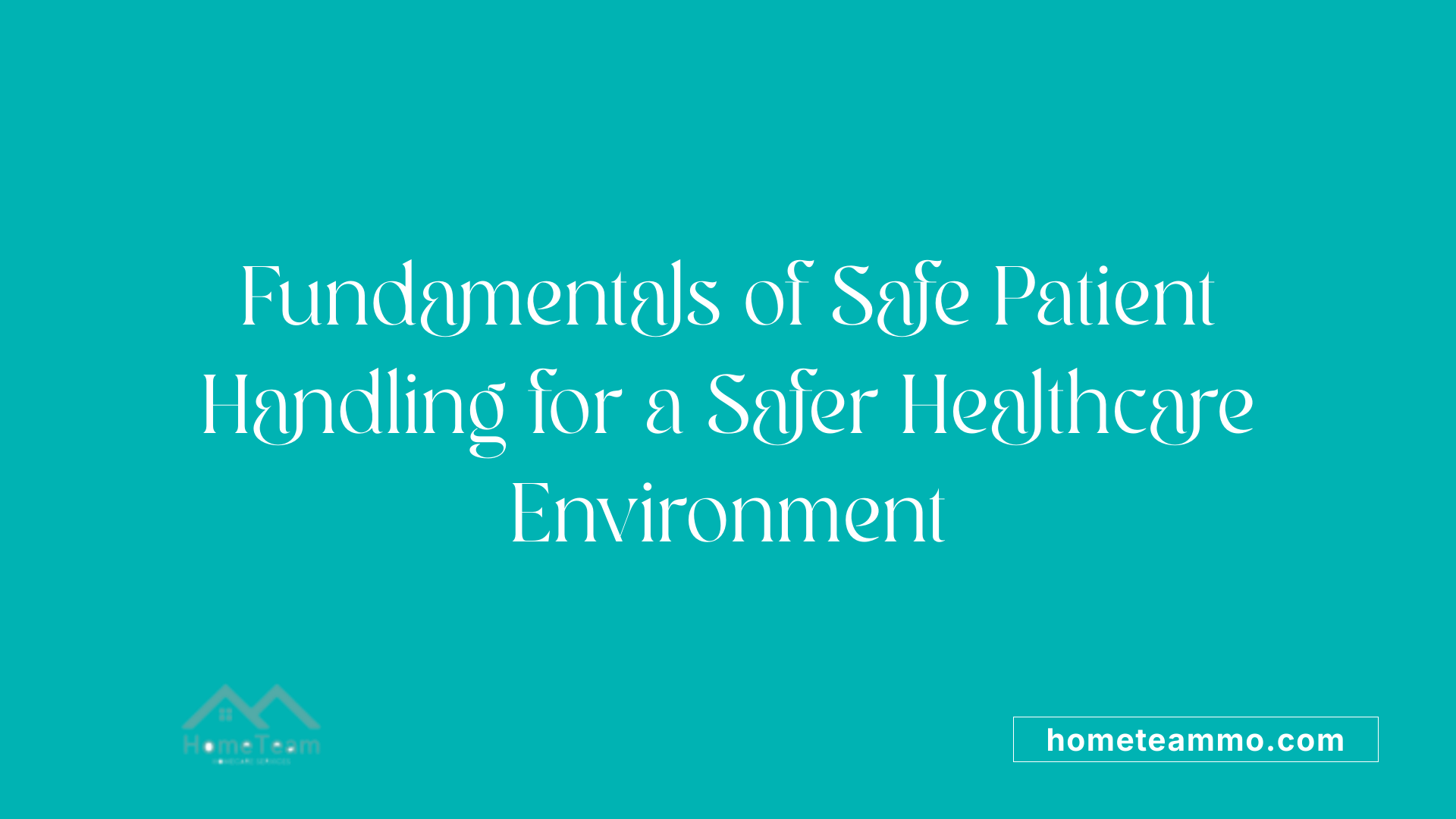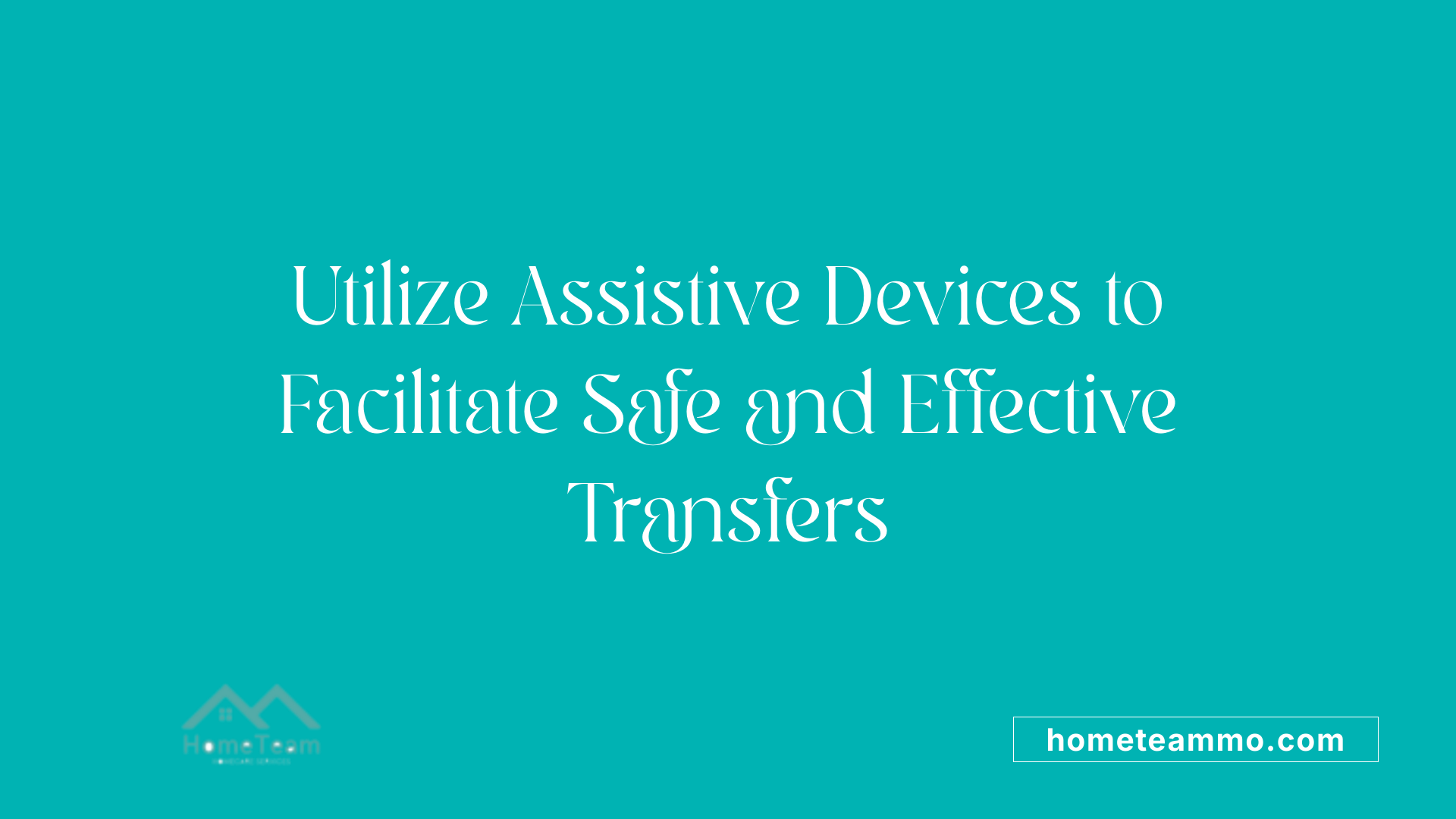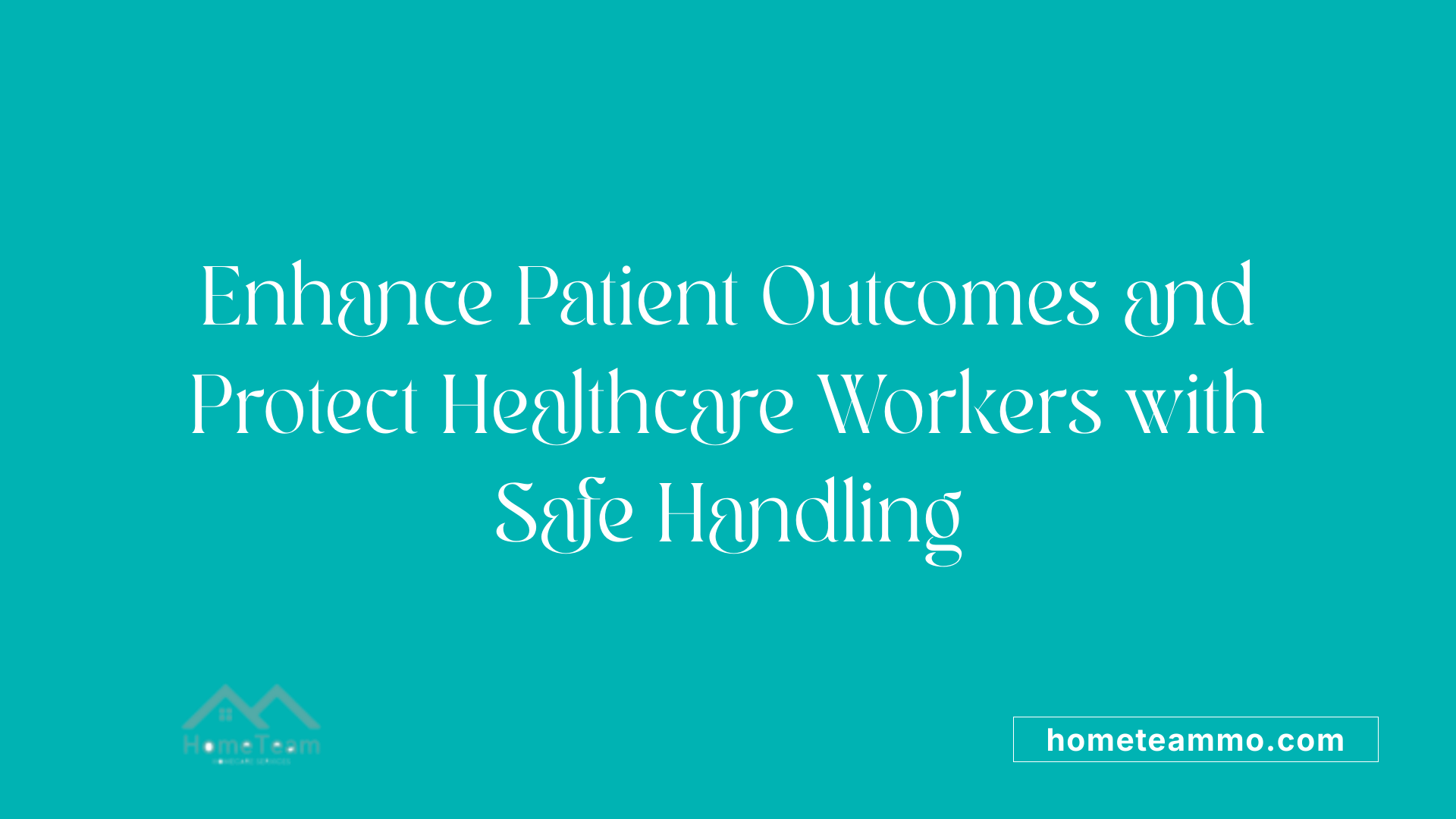Mobility Support: Safe Transfer and Lifting Techniques
Enhancing Safety in Patient Mobility Applications

Understanding the Importance of Safe Transfer and Lifting Methods
Effective and safe transfer and lifting techniques are crucial components of patient care that protect both healthcare providers and individuals with mobility challenges. Proper practices, use of assistive devices, environmental preparations, and staff training are fundamental elements that contribute to safe mobility support. This comprehensive approach not only minimizes injury risks but also promotes patient independence and recovery, emphasizing the need for methodical procedures tailored to individual needs.
Principles of Safe Transfer and Lifting in Healthcare

What are safe patient handling and mobility techniques?
Safe patient handling and mobility (SPHM) practices focus on minimizing physical strain on healthcare workers while ensuring patient safety during transfers and repositioning. These techniques incorporate specialized equipment such as ceiling lifts, floor-based lifts, powered stand assist devices, air-assisted transfer mats, and transfer slings. The goal is to facilitate smooth, secure movements that reduce the risk of injury to staff and discomfort or injury to patients.
Implementing effective SPHM includes comprehensive staff training on proper use of equipment, assessing each patient’s transfer needs, and adjusting procedures accordingly. Ergonomic evaluations of the workspace assist in optimizing transfer methods. Policies often mandate regular competency checks and adherence to safety guidelines, ensuring staff are well-prepared.
Design considerations in healthcare facilities also play a role, including the installation of safety features like grab bars, lockable wheels, and adjustable surfaces. The Veterans Affairs (VA) and many other health organizations have formal programs requiring that all medical facilities develop, maintain, and regularly review SPHM protocols. These practices emphasize early mobilization, which helps prevent complications like pneumonia, pressure injuries, and muscle atrophy.
Overall, safe transfer techniques rely on planning, communication, proper use of assistive devices, and teamwork to protect both patients and healthcare providers. They are central to reducing work-related musculoskeletal disorders and fostering a safer healthcare environment.
Proper Techniques for Lifting and Transferring Patients

What are the proper techniques for lifting and transferring in caregiving?
Safe and effective lifting and transferring techniques are essential to prevent injury for both caregivers and patients. First, it is important to prepare the environment by removing rugs, toys, or furniture that could cause tripping or obstruction. This ensures a clear, clutter-free space.
When performing a transfer, caregivers should use proper body mechanics. This includes keeping the back in a neutral position by bending at the hips and knees—like preparing for a squat—rather than bending at the waist. Tightly engaging core muscles, such as the abdominal and back muscles, adds stability and reduces strain.
Using the muscles in your legs, not your back, is crucial. By actively pushing through your legs, you can lift more safely and with less risk of injury. Keep the person close to your body to minimize the effort needed and maintain balance.
Communication is vital. Explain each step to the patient to promote cooperation and understanding. Asking how they feel or if they are ready helps in adjusting the transfer technique accordingly.
Assistive devices such as transfer boards, gait belts, and slide sheets are valuable tools. Transfer boards act as a bridge for seated patients, while gait belts provide a secure grip around the patient's waist, reducing the risk of pulling on clothing. Proper placement and secure fitting of these aids improve safety.
Moreover, employing proper techniques like proper foot positioning—placing one foot slightly behind the other to pivot—and supporting the patient from the waist during stand-up transfers can make the process smoother.
In summary, combining environment preparation, biomechanical principles, proper use of assistive devices, and clear communication results in safer and more efficient transfers, reducing the risk of injury and promoting patient dignity.
Use of Assistive Devices and Equipment in Mobility Support

What are safe patient handling and mobility techniques?
Safe patient handling and mobility (SPHM) methods focus on reducing injury risk for both patients and healthcare providers by relying on specialized equipment. Devices like ceiling lifts, floor-based lifts, powered stand assist lifts, air-assisted transfer devices, and transfer slings are essential tools.
These assistive tools help facilitate secure and effective movements, minimizing manual lifting efforts. Using technology not only protects caregivers from musculoskeletal injuries but also makes transfers safer and more comfortable for patients.
Implementing SPHM involves staff training to ensure proper use and understanding of each device. Regular competency assessments, ergonomic evaluations, and adherence to safety guidelines are crucial. Many facilities incorporate design features such as safety bars, adjustable surfaces, and clear pathways to support effective transfers.
The Veterans Affairs (VA) and other healthcare organizations mandate comprehensive SPHM programs. These include assigning clear roles and responsibilities for overseeing safety practices and ensuring that all staff are familiar with equipment operation.
Early mobilization strategies and progressive physical movement are emphasized in modern SPHM approaches. Proper technique and the use of assistive devices help maintain patient functional status, reduce fall risks, and promote overall recovery. This comprehensive approach safeguards healthcare workers and enhances patient care quality.
| Assistive Device | Function | Proper Use | Additional Notes |
|---|---|---|---|
| Transfer belts (gait belts) | Support for standing or pivoting assistance | Snug fit around waist, firm grip | Prevents strain and slipping |
| Sliding boards | Bridge to facilitate transfers between surfaces | Proper angle and secure placement | Requires training for safe use |
| Mechanical lifts and hoists | Elevate and move patients with limited mobility | Ensure equipment compatibility | Includes various types like ceiling or portable lifts |
| Transfer aids (turn tables, grab bars) | Support lateral or seated transfers | Secure attachments and positioning | Enhance stability during transfers |
Equipment Maintenance and Safety Checks
Regular inspection and maintenance of transfer equipment are vital. This includes checking for wear and tear, ensuring proper functioning, and verifying safety features such as brakes and locks.
Developing a protocol for routine safety checks helps prevent equipment failures that could lead to injuries. Staff should be trained to identify issues and report defects immediately.
Proper storage and cleaning of devices after use promote longevity and prevent contamination. Establishing clear procedures aligns with compliance standards and fosters a culture of safety.
Using properly maintained and tested equipment in combination with trained staff practices significantly reduces injury risks, creates a safer environment, and improves overall care quality.
Safety Guidelines and Precautions to Prevent Injury
How can caregivers ensure safety when lifting or transferring individuals?
Caregivers can significantly reduce the risk of injury during lifting and transferring activities by adhering to proper techniques and safety protocols. One of the most important measures is to employ correct body mechanics. This involves bending at the hips and knees, keeping the back straight, and tightening abdominal muscles. These actions help protect the spine and distribute the workload through stronger leg muscles.
Using assistive devices is another critical step. Equipment such as transfer boards, gait belts, lift sheets, and swivel cushions effectively reduce physical strain. For example, gait belts, placed snugly around the person's waist, provide a firm grip to support standing and pivoting tasks. Transfer boards serve as bridges, enabling smooth moves between surfaces while limiting unnecessary tugging or pulling.
Ensuring all equipment is secure, functional, and properly used is vital. Regular checks and routine maintenance help prevent accidents caused by equipment failure. Clear communication with the individual being transferred is essential—explaining each step, asking for their participation when possible, and confirming their comfort level helps coordinate safe movements.
Environmental safety also plays a role. Avoid transferring individuals on icy, uneven, or cluttered surfaces. Proper clothing and footwear for cold weather help prevent slips, and securing wheelchairs or mobility aids prevents accidental shifts. When using mechanical lifts, caregivers must verify that the equipment is appropriate for the patient’s needs, properly assembled, and operated following manufacturer instructions. Training on the correct use of lifts and ensuring all staff are competent in their operation further enhance safety.
Overall, a combination of proper techniques, appropriate equipment, clear communication, and a safe environment is crucial to prevent injuries during patient transfers. This comprehensive approach not only safeguards caregivers’ health but also ensures patient comfort and dignity.
Training, Education, and Policy Implementation
Ensuring safe and effective patient handling starts with comprehensive training programs for caregivers. These programs focus on teaching proper transfer techniques, body mechanics, and the use of assistive devices such as gait belts, transfer boards, and mechanical lifts. Competency assessments are critical in verifying that caregivers understand and can safely apply these techniques, reducing the risk of injury to both patients and healthcare workers.
The development and enforcement of policies and protocols are essential components of a safe workplace culture. Organizations should establish clear guidelines for manual handling, including the use of mechanical lifts when necessary and the proper way to perform transfers and repositioning. These policies help standardize procedures, reinforce safety practices, and promote accountability among staff.
A workplace safety culture emphasizes ongoing education, open communication, and the importance of asking for help when handling heavy or uncooperative patients. Encouraging staff to participate in regular safety training updates keeps skills current and helps identify areas for improvement.
Professional development resources, such as workshops, online courses, and simulation training, support staff in mastering safe transfer techniques. Resources from organizations like the Occupational Safety and Health Administration (OSHA) and the National Institute for Occupational Safety and Health (NIOSH) provide evidence-based guidelines and best practices.
Recommended safe lifting techniques include keeping the spine aligned, engaging core and leg muscles, and holding the patient close to reduce strain. Remember to bend at the hips and knees instead of the waist and avoid twisting your torso while lifting. Clear communication and planning help ensure that all team members are prepared for each transfer.
Implementing these strategies requires a commitment to continuous education, adherence to safety policies, and fostering a proactive safety culture. By doing so, healthcare facilities can minimize occupational injuries, improve patient outcomes, and create a safer working environment for everyone involved.
Benefits of Safe Transfer and Lifting Practices
 Implementing proper transfer and lifting techniques offers numerous advantages for both patients and healthcare workers. When caregivers follow safety procedures, patient outcomes generally improve due to reduced risk of injury during movement. Proper repositioning and transfer methods promote comfort, prevent skin injuries like pressure ulcers, and contribute to faster recovery, especially through early mobilization.
Implementing proper transfer and lifting techniques offers numerous advantages for both patients and healthcare workers. When caregivers follow safety procedures, patient outcomes generally improve due to reduced risk of injury during movement. Proper repositioning and transfer methods promote comfort, prevent skin injuries like pressure ulcers, and contribute to faster recovery, especially through early mobilization.
For healthcare workers, adopting safe practices minimizes the risk of musculoskeletal injuries (MSDs), which are common in manual patient handling. Techniques such as using assistive devices like transfer boards, gait belts, and hoists—combined with correct body mechanics like bending at the knees and keeping the back straight—significantly reduce strain. Regular use of assistive equipment and adherence to training protocols prevent injuries such as back strains, sprains, and chronic pain.
Organizations benefit financially from these safety measures as well. Reducing injuries leads to fewer days of work missed, lowers healthcare costs related to workers’ compensation claims, and decreases turnover caused by work-related injuries. Many healthcare facilities are now investing in ergonomic equipment and comprehensive training programs, which, although initially costly, tend to save money over time through injury prevention and enhanced staff productivity.
How can caregivers ensure safety when lifting or transferring individuals? To ensure safety, caregivers should utilize proper body mechanics—such as bending at the hips and knees, keeping the back straight, and maintaining a close hold on the person being transferred. Using assistive devices like transfer belts, slide boards, and lift slings can greatly enhance stability and reduce strain. Clear communication with the individual about the steps involved helps coordinate movements smoothly. Additionally, securing the environment by removing rugs, toys, or furniture prevents tripping hazards. Regular training and assessment of equipment safety are essential components that support safe and effective transfers.
By adhering to these practices, organizations can foster safer workplaces, increase patient comfort, and notably decrease injury rates among healthcare workers. The consistent application of these principles is crucial for sustainable healthcare delivery, emphasizing both safety and quality of care.
Implementing a Safer Future in Mobility Support
The adoption of proper transfer and lifting techniques, supported by assistive devices, comprehensive training, and strict safety protocols, is vital to creating a secure environment for patients and healthcare workers alike. Through environmental modifications, staff education, and policy enforcement, healthcare facilities can minimize injury risks, improve patient outcomes, and foster a safety-conscious culture. Emphasizing early mobility, continuous competency development, and the integration of innovative assistive technologies will pave the way for safer, more effective mobility support practices that uphold dignity, promote independence, and protect against injury.
References
- Tips for Safe Lifting and Transferring | Nevada Dual Sensory ...
- Mobility Techniques | Safe Transfers for a Loved One - Agrace
- Lifting Techniques for Home Caregivers - OrthoInfo - AAOS
- Safe Transfer & Lifting Techniques with Assistive Equipment - Rifton
- Patient Care Transfer Techniques - StatPearls - NCBI Bookshelf
- About Safe Patient Handling and Mobility | Healthcare Workers - CDC
- Transfers - Physiopedia
- [PDF] Safe Transfers: - ProviderServices.iehp.org
- Safe Transfer Techniques for Caregivers - Alliance Homecare
- Chapter 8: Utilize Principles of Mobility to Assist Clients - NCBI

How to Plan for Long-Term Home Care Services

How Home Team Helps Families Make Informed Care Decisions

How Home Team's Caregivers Provide Peace of Mind for Families



